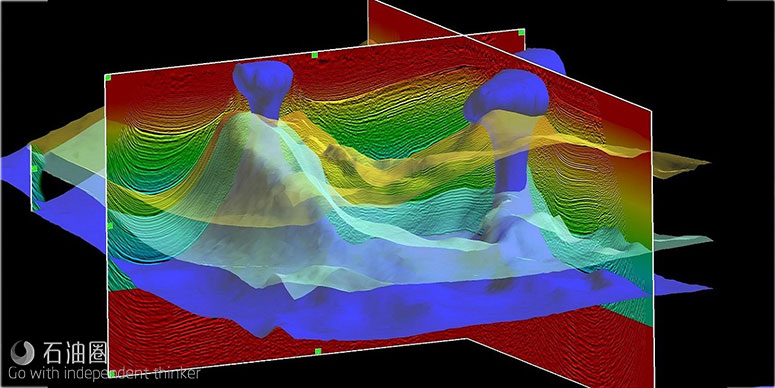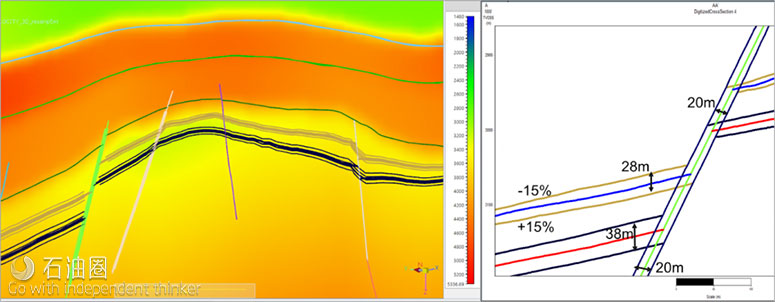Integration of advanced technologies enables rapid evaluation of multiple subsurface scenarios.
Uncertainty is inherent in every stage of the oil and gas exploration and production business. The ability to explore uncertainties is a valuable tool for understanding and evaluating risks, and for developing better risk mitigation and decision-making strategies. One of the main sources of subsurface uncertainty is related to the velocity model, where geoscientists face a range of possible models that can fit the recorded data.
To address this problem, Emerson has invested significant time and effort into integrating two technologies to better quantify uncertainty at the reservoir level. The first is the SKUA geomodeling solution, which enables the creation of geological sealed models from both the original structural model and the perturbed models. The second is the GeoDepth time-preserving tomography (TPT) solution, which allows the generation of many perturbed models created from a model defined by velocity parameters and structural features. The combination of the two technologies and the synchronization of their updates enable the creation of accurate subsurface models that are both geologically and geophysical consistent.
The uncertainty workflow begins by creating a sealed depth model in SKUA from seismic interpretation data and an initial background velocity model. This model is used as input to TPT, together with user-defined uncertainties (velocity perturbations).
TPT is an accurate, efficient and flexible tool for constructing kinematically equivalent subsurface interval velocity models in depth from a background model and a set of model parameter perturbations. Using this method, parameters of the background model can be changed while preserving travel times of all specular ray pairs traveling through the subsurface model. Perturbations can be applied for all types of model parameters, including structural (horizons, faults) and material (velocity, anisotropic). The travel times of all ray pairs traced during the tomographic inversion are kinematic invariants. This means that in the migrated domain, all the equivalent models should provide flat reflection events along common image gathers (CIG), so that CIGs are not required as input.
TPT outputs structural and velocity parameter residuals of the perturbed parameters on the TPT (coarse) grid. Updated velocity volumes on a fine grid, that combine the residual velocity updates with the background velocity volumes, are also output. The structural perturbations can be output as a vertical displacement or as a three-component displacement vector, thus allowing the perturbed structure to be changed in all directions. In this synchronized workflow, the three component displacements (X, Y and Z) are used together with the original SKUA model to provide an updated perturbed model in depth.
In the presence of complex models, the structural information may include large numbers of fault systems and multivalue surfaces; updating them may be challenging. SKUA uses a unique, patented technology that operates in chronostratigraphic space to create perturbed sealed models that are geologically consistent with the current interpretation.
In the Emerson uncertainty workflow, TPT is run automatically numerous times with different sets of velocity perturbations. This results in a range of plausible subsurface models in depth, which enable geoscientists to explore different scenarios. The models can then be input to Gross Rock Volume (GRV) analysis for calculating P10, P50 and P90 scenarios and evaluating and quantifying uncertainty of the subsurface model.
A case study was carried out with this workflow in a heavily faulted area of the central North Sea where uncertainty in communication across faults needed to be evaluated. Since there was uncertainty in the seismic velocity at the reservoir level, velocity perturbations were created and updated geological models were obtained with approximate GRV for each. The results demonstrated that the GRV changes can reach up to approximately 27%, allowing better quantification of the risk.
This method can be applied to many exploration and field development scenarios where seismic acquisition, seismic resolution, and measurement shortcomings create uncertainties in the velocity model. It is a powerful, yet easy-to-use tool for assessing uncertainty before making drilling decisions.

 石油圈
石油圈

